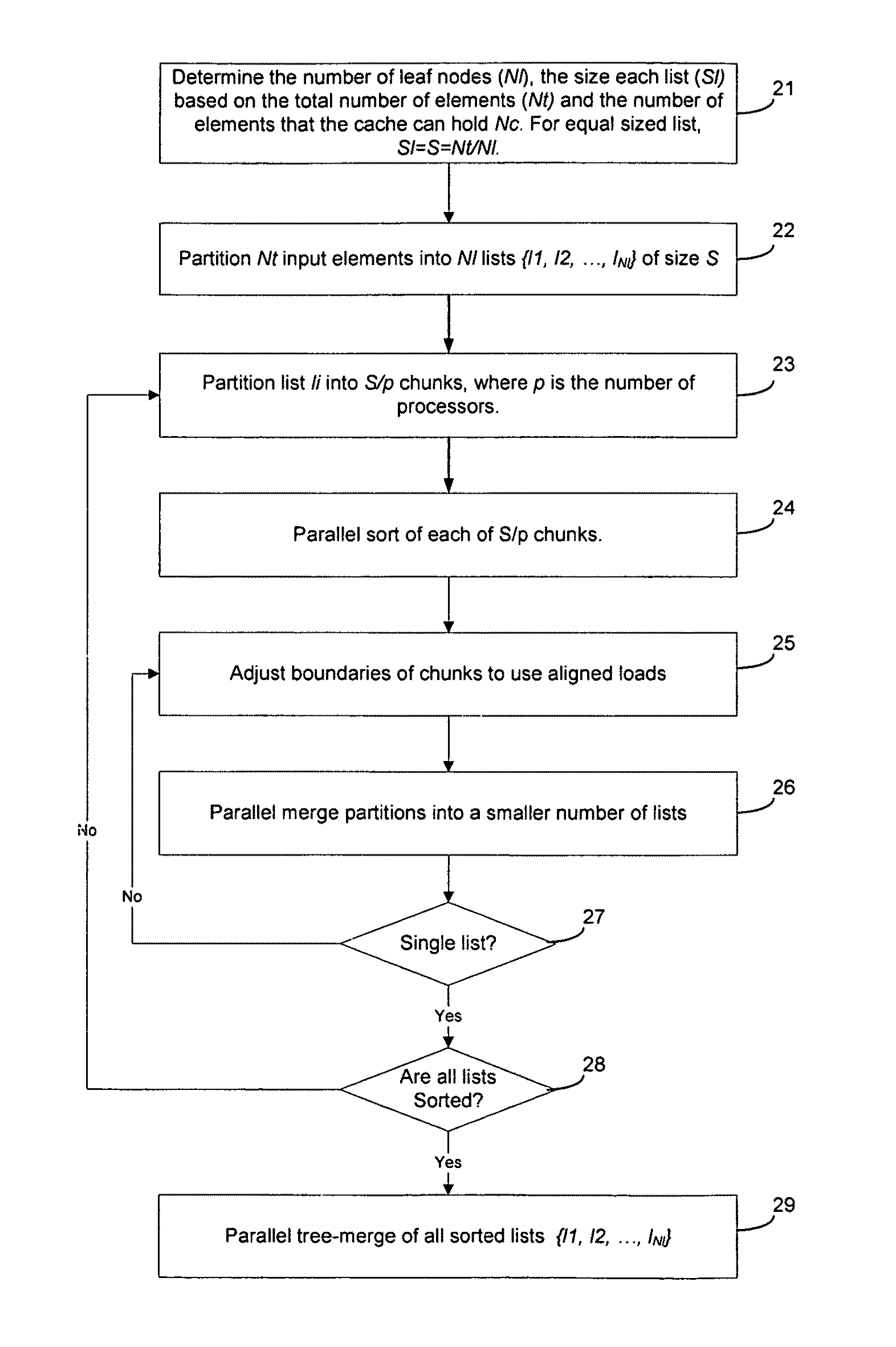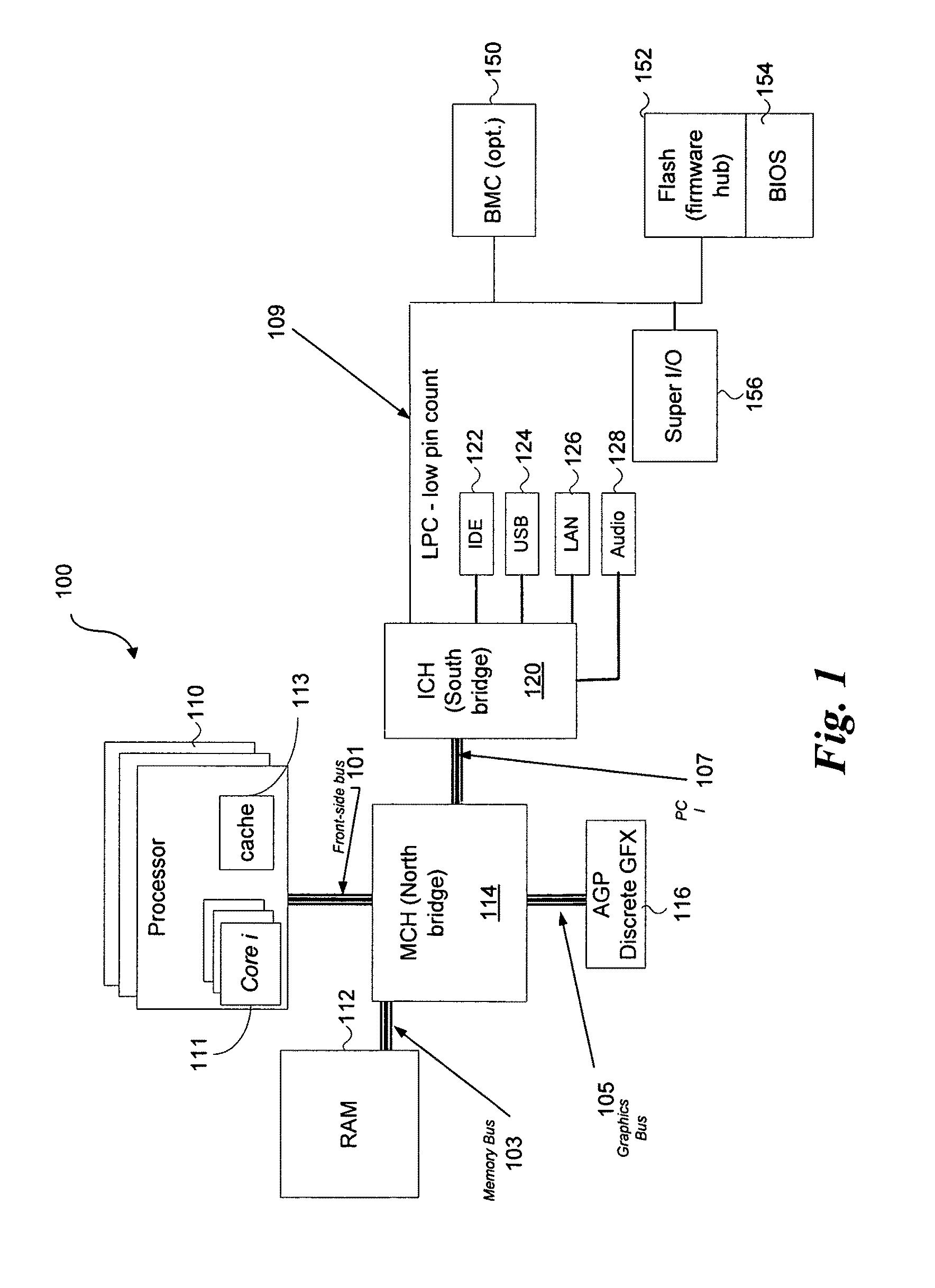System and method for memory bandwidth friendly sorting on multi-core architectures
a multi-core architecture and memory bandwidth technology, applied in the field of sorting, can solve the problems of not being applied in practice, not increasing the memory bandwidth proportionally, and certain computational overhead of algorithms, etc., and achieves the effect of not being simd (single instruction, multi-data) friendly
- Summary
- Abstract
- Description
- Claims
- Application Information
AI Technical Summary
Problems solved by technology
Method used
Image
Examples
Embodiment Construction
[0010]An embodiment of the present invention is a system and method relating to performing tree merging that scales well to large number of cores. In addition, there is no extra computational overhead. The resultant algorithm is also SIMD friendly. Overall, the sorting performance is almost independent of the memory bandwidth.
[0011]For purposes of illustration, the following terminology will be used throughout this description.
[0012]Nt: total number of elements to be sorted
[0013]Nl: number of leaf nodes in a tree
[0014]L: a set of sorted lists {l1, l2, . . . lNl}; |L|=Nl
[0015]Nint: number of internal nodes in a tree
[0016]Sli: size of a pre-sorted list li (1=1, 2, . . . , Nl); S=Sli if list size are the same
[0017]Nb: a block / chunk of elements that move up the tree as a single unit
[0018]Nc: number of elements that the cache can hold
[0019]Ss: SIMD width
[0020]Reference in the specification to “one embodiment” or “an embodiment” of the present invention means that a particular feature, st...
PUM
 Login to View More
Login to View More Abstract
Description
Claims
Application Information
 Login to View More
Login to View More - R&D
- Intellectual Property
- Life Sciences
- Materials
- Tech Scout
- Unparalleled Data Quality
- Higher Quality Content
- 60% Fewer Hallucinations
Browse by: Latest US Patents, China's latest patents, Technical Efficacy Thesaurus, Application Domain, Technology Topic, Popular Technical Reports.
© 2025 PatSnap. All rights reserved.Legal|Privacy policy|Modern Slavery Act Transparency Statement|Sitemap|About US| Contact US: help@patsnap.com



